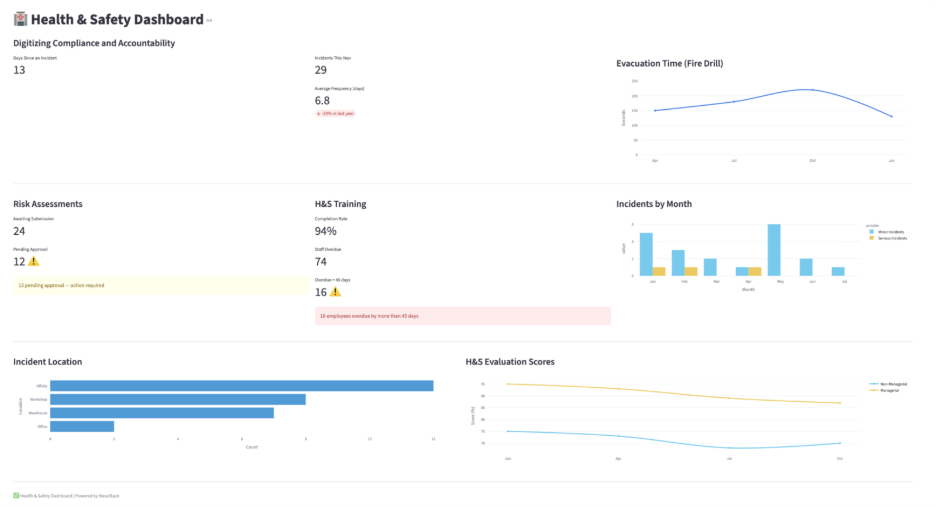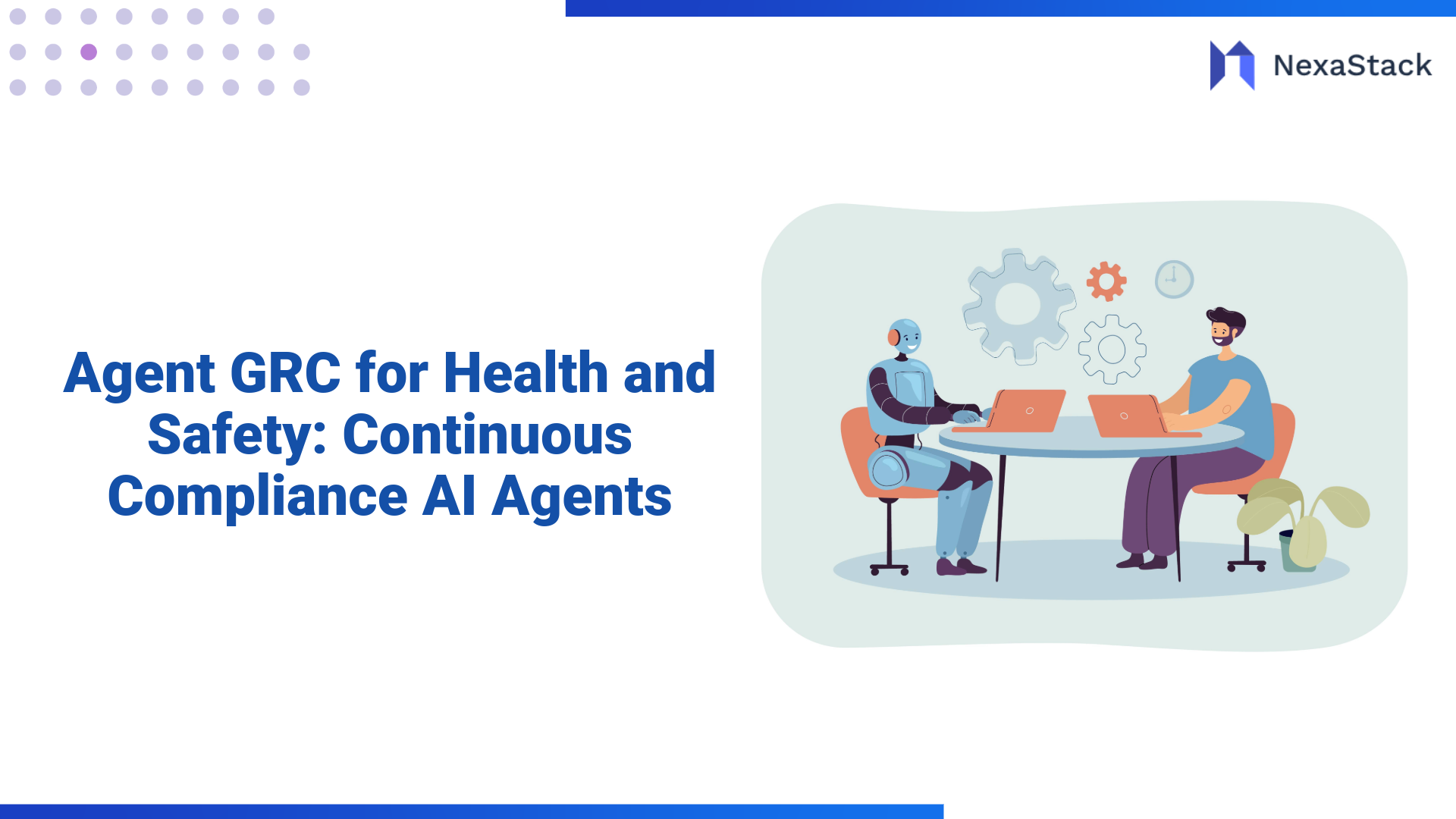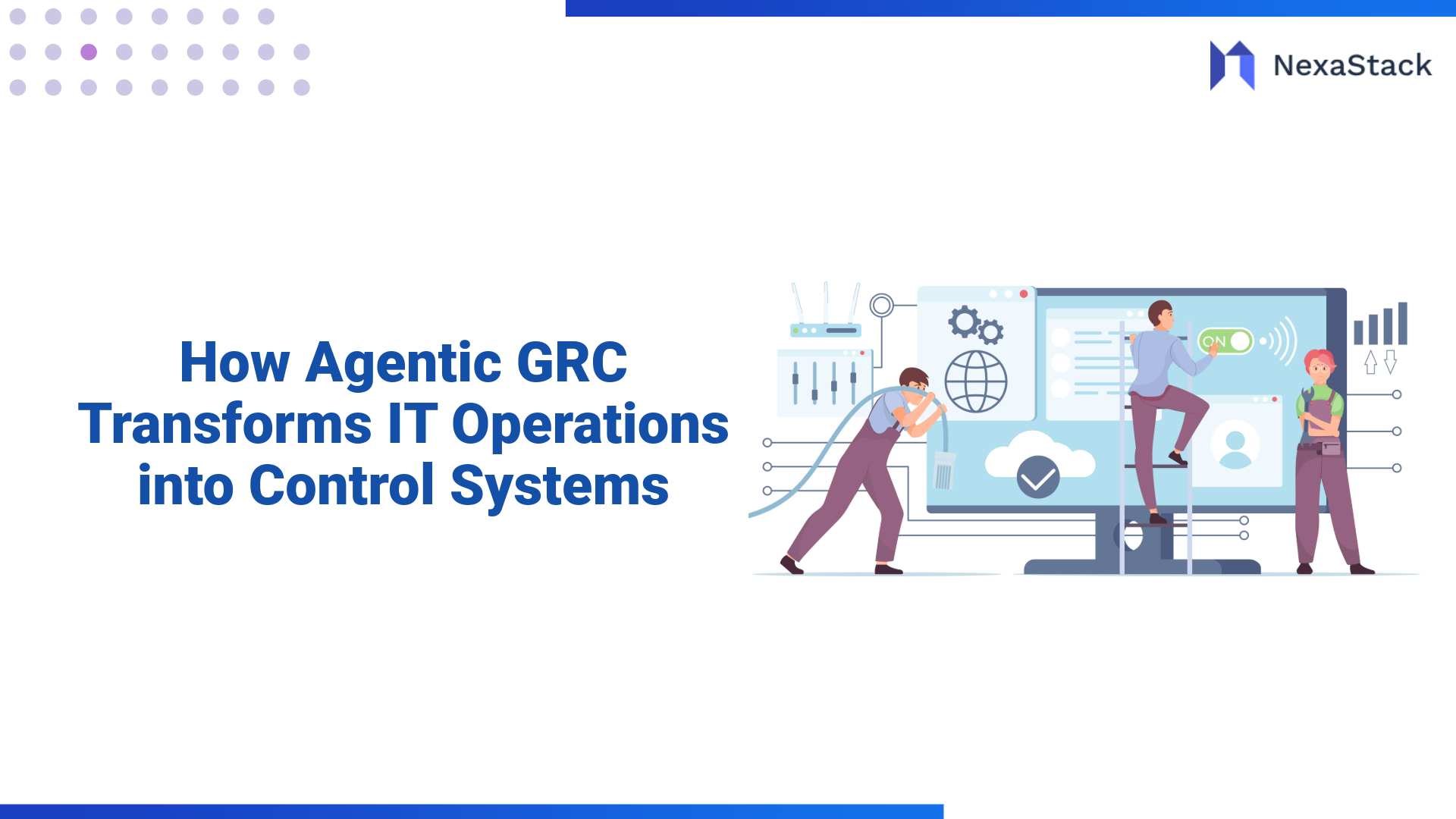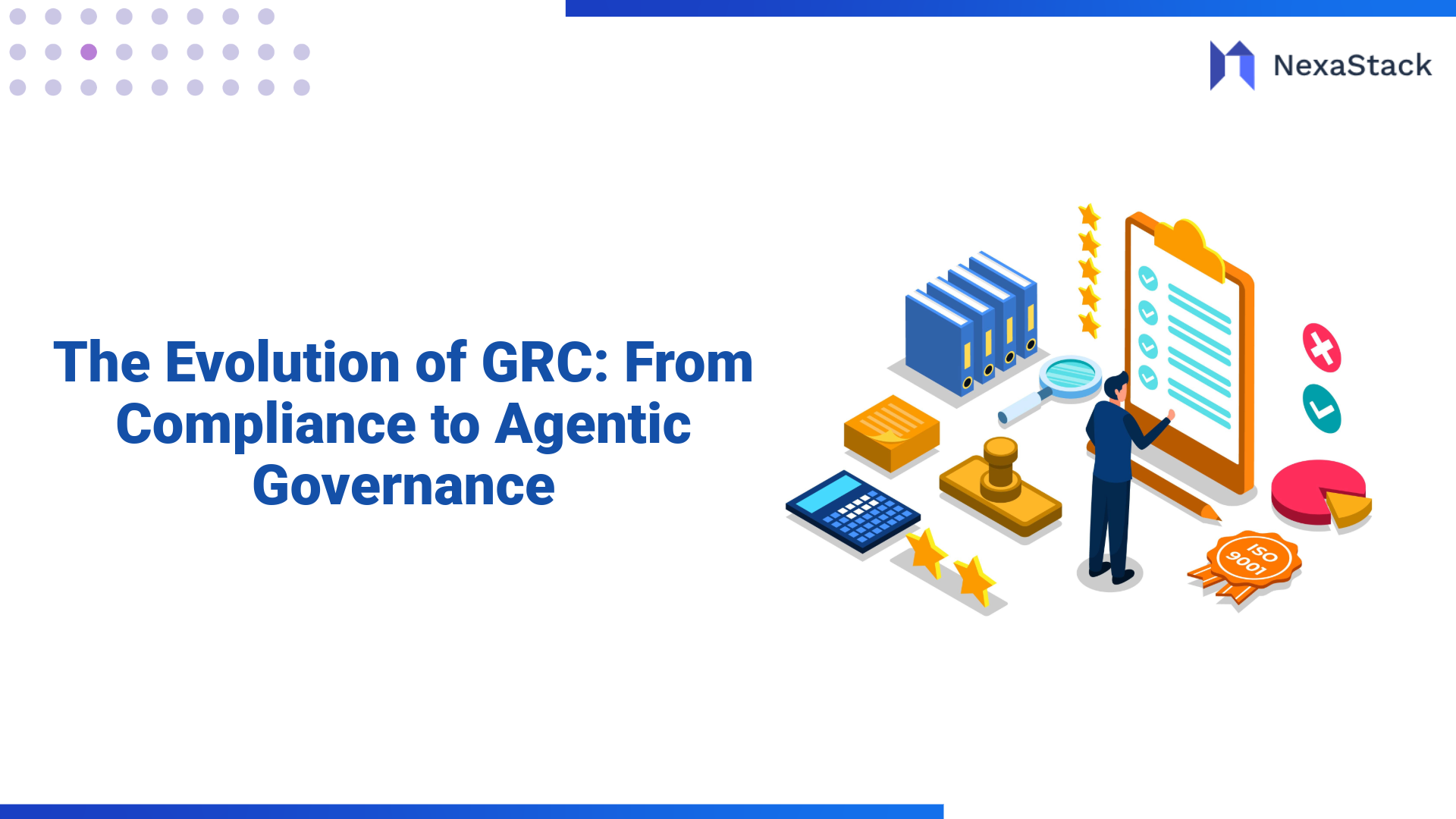Example: How Agentic GRC Works in Action
Let’s imagine a real-world scenario in a manufacturing plant.
The Event
A forklift reversing alarm fails during a shift. A near-miss occurs.
Step-by-Step Response
-
Detection: The forklift’s IoT sensor detects the alarm malfunction and sends data to Nexastack.
-
Agent Trigger: The Equipment Safety Agent identifies this as a control breach.
-
Task Automation: It automatically assigns an inspection task to maintenance, notifies the H&S manager, and logs the event.
-
Evidence Capture: The technician completes the inspection via mobile app, uploads a photo, and submits the checklist.
-
Audit Linkage: The agent links this evidence to the control (“Monthly Forklift Safety Inspection”) and the related ISO clause.
-
Risk Update: The risk score for that forklift and zone increases temporarily until the issue is resolved.
-
Escalation: If unresolved after 48 hours, the system escalates to the plant manager.
-
Dashboard Update: The H&S dashboard updates in real-time: control status = “Yellow,” evidence pending. Immediate response, full traceability, zero paperwork, and continuous compliance.
Once Nexastack Agent GRC is implemented, organizations can track tangible metrics:

-
Inspection completion rate (on-time vs overdue)
-
Average time to close hazard reports
-
Audit evidence retrieval time
-
Residual risk trend across sites
-
Reduction in manual admin hours
-
Reduction in repeated audit findings
-
Training completion rate & certification validity
-
Near-miss frequency and trend improvement
These KPIs help demonstrate clear ROI — safer operations and lower compliance costs.
Technical Architecture at a Glance

Integrations
-
CMMS: Equipment inspections, maintenance records
-
LMS: Worker training & certifications
-
Incident Management Systems: Near-miss and accident data
-
IoT Platforms: Real-time hazard sensors
-
Contractor Portals: Compliance documentation
-
Data Lake / BI Tools: Reporting and analytics
This interconnected setup ensures a single source of truth for all health and safety (H&S) compliance data.
Use Cases: Agentic GRC in Real Health & Safety Scenarios
-
Contractor Compliance: Agents monitor contractor certifications, insurance, and safety training. When documents expire, tasks are auto-assigned for renewal. Dashboards show which contractors are compliant or at risk.
-
Worker Fatigue Monitoring: Wearables track work hours and vital signs. If thresholds are exceeded, agents alert supervisors and schedule breaks. The event is logged and linked to the fatigue management policy.
-
Predictive Equipment Maintenance: IoT sensors detect abnormal machine vibration. The system triggers inspection and logs the data. Predictive analytics identify future failure risks.
-
Near-Miss Analytics: Agents categorize and cluster near-miss reports—repeated patterns (same zone/operator) trigger root-cause analysis. Insights feed directly into control improvements.
-
Continuous Audit Readiness: Evidence is continuously collected and indexed. Agents compile complete audit packs on demand. Compliance dashboards display the site status as “green/yellow/red” in real-time.
Benefits at Every Level
For Workers
-
Simple mobile prompts for inspections and incident reporting
-
Real-time hazard alerts and reminders
-
Safer, smarter working environment
For Supervisors
-
Live dashboards of pending tasks and site risks
-
Less time chasing paperwork, more time focusing on prevention.
For H&S Teams
-
Automated evidence collection and compliance tracking
-
Time freed for strategy, analysis, and culture-building.
For Auditors
-
Full traceability, one-click access to evidence, instant reports.
For Executives
-
Visibility into enterprise-wide safety performance
-
Real-time insight into compliance posture and operational risk
Best Practices for Success
-
Start small, scale smart: Begin with one business unit, prove value, then expand.
-
Keep humans in the loop: Let agents automate but keep human oversight for judgment calls.
-
Focus on data quality: Clean, consistent data is the foundation for automation.
-
Train and engage users: Make mobile and dashboard tools intuitive for field staff to enhance their productivity.
-
Tie to culture: Use digital transformation as a way to strengthen safety culture, not just compliance.
-
Integrate early: Connect to existing systems (training, incidents, maintenance) rather than rebuild.
-
Ensure privacy and cybersecurity: Protect worker data and evidence of integrity.
The Future of H&S with Agentic GRC
As AI and IoT mature, the next generation of safety systems will include:
-
Edge-based agents running offline at remote sites
-
Predictive safety analytics to forecast incidents before they occur
-
Augmented reality (AR) for real-time inspection guidance
-
Cross-supply-chain safety governance across contractors
-
Behavioral analytics to measure and improve safety culture
-
Integrated ESG reporting, linking H&S data to sustainability metrics
Why Act Now
The cost of inaction is high — one serious safety incident can result in injuries, reputational damage, and millions in penalties.
Meanwhile, the business case for digital compliance is clear:
-
Up to 40% lower operational compliance costs
-
Faster audit cycles and fewer findings
-
Higher accountability and transparency across teams
Nexastack Agent GRC enables organizations to move beyond form-filling and reactive checks into a world of proactive, data-driven safety management.
Conclusion
Health and Safety is where technology meets humanity. The goal is not to replace people with software — it’s to empower them with systems that ensure safety, transparency, and accountability.
By adopting an agentic approach with Nexastack Agent GRC, organizations can:
-
Automate compliance workflows
-
Continuously monitor risks
-
Build an audit-ready culture
-
Strengthen trust, efficiency, and safety performance
Safety shouldn’t just be compliant — it should be continuous, connected, and intelligent.
Frequently Asked Questions (FAQs)
Discover how Nexastack’s Agentic GRC brings AI-driven compliance, accountability, and continuous monitoring to health and safety operations—ensuring smarter governance and safer workplaces.
What is Agentic GRC for Health & Safety?
Agentic GRC utilizes intelligent AI agents to monitor, audit, and enforce health and safety policies automatically, ensuring continuous compliance, data integrity, and accountability across operations.
How does AI-driven compliance improve workplace safety?
AI agents continuously track safety protocols, detect anomalies, and trigger preventive actions—helping organizations mitigate risk and ensure compliance with standards like ISO 45001 and OSHA.
Can Agentic GRC integrate with existing EHS systems?
Yes. Nexastack integrates seamlessly with Environmental, Health, and Safety (EHS) platforms, IoT sensors, and HR systems to unify compliance monitoring and automate safety reporting.
What role does accountability play in Agentic GRC?
Agentic GRC creates an auditable trail of AI-driven decisions and actions, ensuring transparency and responsibility in compliance processes while empowering teams with real-time insights.
Which industries benefit most from Agentic GRC for Health & Safety?
Manufacturing, construction, energy, logistics, and healthcare sectors leverage Agentic GRC to maintain compliance, improve response times, and foster safer, data-driven work environments.






